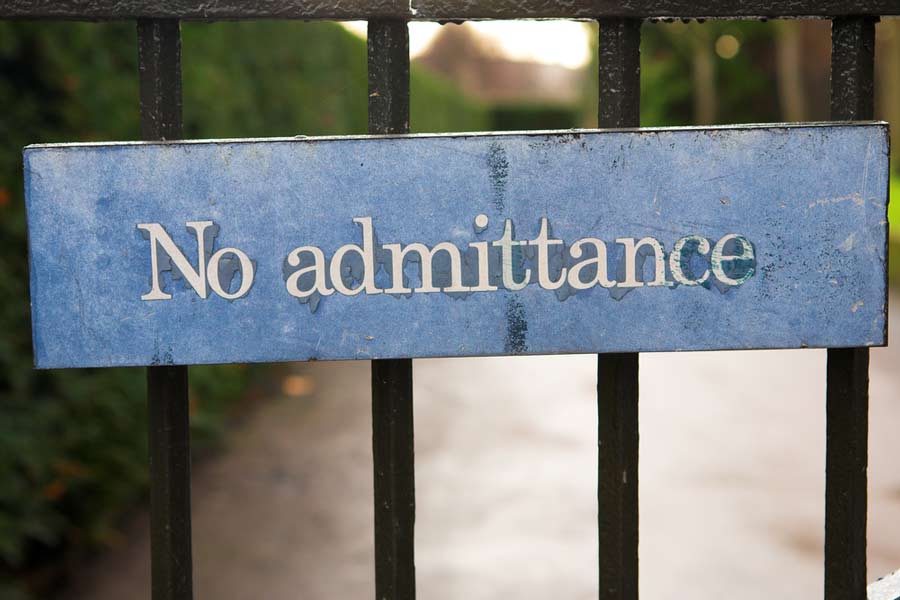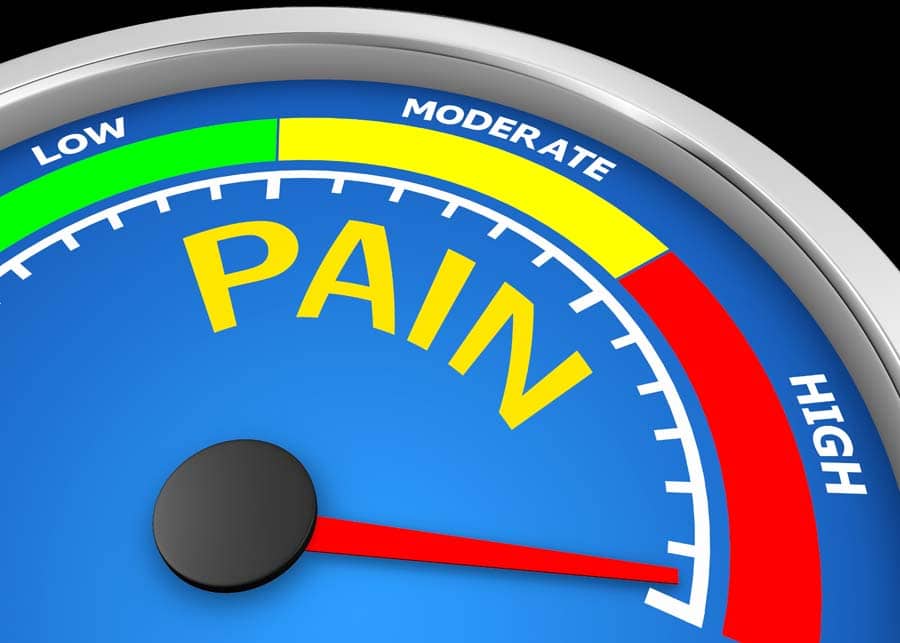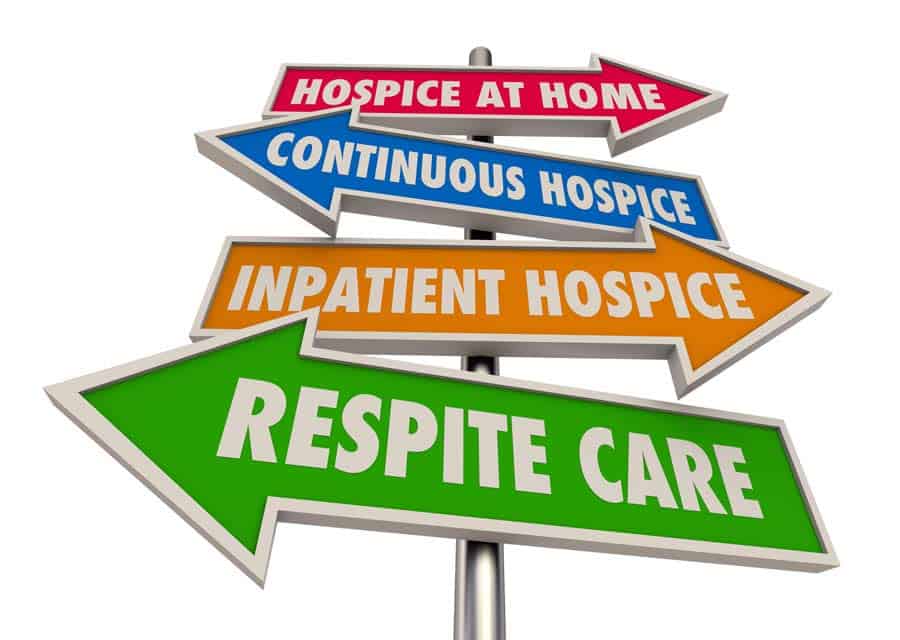Please view our updated COVID-19 guidelines and visiting procedures →.

Of all the questions we get asked by families calling our Admissions Office at The Connecticut Hospice, this is the most common one, and one of the hardest to answer. The very short answer is that Medicare is calling the shots for hospice providers.
There are many rules that govern hospice care and hospice eligibility. Some people, who are not primarily covered by Medicaid or Medicare, have insurance plans with gatekeepers, who dictate whether someone can have their stay in our inpatient unit covered by their insurance plan, and for how long. This is mostly for those under 65, and, while companies and plans vary, such admissions are generally approved. At least one large employer in our region has a lifetime limit on hospice care of all kinds, but that type of restriction is rare.
Almost 95% of our patients on our home care or inpatient service are covered by either Medicare or Medicare. Those rules are set by the Centers for Medicare & Medicaid Services (CMS), which is part of the United States Department of Health and Human Services (HHS), the Federal department that governs, among other things, Medicare reimbursement. Connecticut Hospice was the first provider in the country to be reimbursed by Medicare for hospice care, and that bill was passed in 1983. It is updated annually as to rates, and there are sometimes changes in the rules, or new interpretations of those rules.
Recently, these interpretations have focused on fraud, with half of the CARES Act money during COVID going toward more investigators, to make sure that people are not being covered for hospice care if they are not entitled to it. While the standard is not black and white, the most commonly cited dictum is that the patient’s primary diagnosis, if left untreated, would likely result in death within six months. This is invoked so often that it is shocking to note that the period of time—six months—was chosen arbitrarily at the time the original bill was enacted. While there has been much encouragement from the industry to make that period 12 or even 24 months, that has not yet happened.
Once the patient’s eligibility for hospice care has been established, there is a further requirement for inpatient care to be allowed. The rule is that the patient cannot be feasibly treated in another setting. Clearly, that is a definition that cannot be applied without using some medical judgment. Symptom management must be required at a level which cannot be sustained in the home or in a skilled nursing facility. Generally, this would refer to breakthrough pain, extreme agitation, or the need for frequent adjustments in medication with an onsite pharmacy.

The most shocking part of the above definition is that nowhere does it refer to the patient’s prognosis. Dying is not, by itself, a criterion for inpatient hospice care. “Comfrtable” is not a condition that, while all hospices strive to achieve it, is acceptable in an inpatient setting, except with respite care.
Respite care is allowed by Medicare for no more than five days during each certification period (60 or 90 days). Patients can come to an inpatient facility for pain management or caregiver breakdown (again, not a term that has an unambiguous definition).

Sometimes, non-hospice patients can also be brought to an inpatient unit for symptom management, on a Diagnostic Related Group (DRG) basis. That can only happen at Connecticut Hospice because we are separately licensed as an acute care specialty hospital, in addition to being licensed as an inpatient hospice and as a home hospice. That would be a limited stay to address issues or adjust medications, with the idea that the patient could then return home. Since those patients are not enrolled in hospice, they don’t need to qualify in any particular way for CMS, but they do need to require symptom management.
It is certainly understandable that patients and their families would find all these rules confusing, and perhaps unfair. Each family has its own understanding of what care at home entails, and differing capacities for providing it. What constitutes an acceptable level of home care by the family, according to Medicare, can include up to 18 injections per day of medication. Even when a caregiver can provide that level of support, the strain of not sleeping, especially if the patient is agitated and restless, can be extremely wearing. When they call about an inpatient bed, and are told that their loved one is not inpatient eligible, that can be very upsetting to hear.
Unfortunately, we have the beds to take those patients, but not the ability to get paid the inpatient rate for them. Occasionally, and more often during COVID, families whose loved one qualifies for home (routine) hospice care may choose to bring them into our inpatient facility, and privately pay the difference between what Medicare will pay for home care, and what it pays for inpatient care.
We are incredibly sympathetic to those who find this onerous, and totally understand that it is not a choice that every family can afford to make. The entire industry is lobbying for a better, fairer, and more comprehensive approach to end-of-life care in this country. As the baby boomers age, our collective system for caring for those with terminal illnesses will be stressed to the breaking point. Some cultures deal with this issue differently, but, in our increasingly global culture, not everyone will live close enough to their elders for family care to work.
It sounds like a bad joke to tell people to “write to their Congressional representatives”, but that is the only way things will change. In the meantime, Medicare and Medicaid will continue to dictate the amount of care it will provide, and the amount they will pay providers to give it. When they audit hospice providers, which they are doing on an alarmingly increasing basis, they can unilaterally decide that someone didn’t need to be in inpatient hospice care, or in hospice care at all. At that point, they withdraw the money for that patient from our account with them, and we can either accept that, or go to an Administrative Law Judge to appeal the ruling. That process takes up to five years, during which we do not have the use of the money, even if we win it back in the end. Some hospices have simply shut their doors in these circumstances, since they are spending their time in litigation rather than in patient care.
All of this is a very long answer to the simple question of why we say no to so many patient families who inquire about inpatient care. While we would love to provide it, we cannot do so, if it means that we will be doing it for free. Therefore, we have to apply the same lens that the government uses when evaluating a patient, and that causes us to turn down many people we would otherwise admit.
So, if you are calling us about an admission, you and your doctor must be prepared to meet the standard that our inpatient facility is the only feasible place to treat the patient’s pain and symptoms. All of us know that we are experts in providing the best in end-of-life care, but we are not the ones deciding when we are allowed to do that. If privately paying the difference is an option for your family, we are happy to discuss that avenue, but we are not trying to push people toward that alternative. In a perfect world, we would take all comers, and care for them with our customary competence and compassion. Until such a system exists, we will care for all those whom we are approved to take on an inpatient basis, and offer home hospice care to the others, if they qualify for that service.
We hope you understand that we are sympathetic to your needs, and are doing our best to accommodate all the patients we can.

As a not-for-profit, we depend on generous donors to help us provide customized services and therapies that aren’t completely covered by Medicaid, Medicare, or private insurance.
Please make a gift to help us sustain the highest standard of care.
Admissions may be scheduled seven days a week.
Call our Centralized Intake Department: (203) 315-7540.